Can someone help be determine btu heat loss?
My oil burner forced hot air furnace can provide 3 levels of btu heat output based on which nozzle is used int he oil burner. It’s currently sized at the highest value, and I’m wondering if it rally needs to have that much btu output; partially because it short cycles. I was hoping someone would help me calculate my heat loss. This furnace only heats the first floor; the second floor is heated by a separate system and is always kept 2 degrees higher than the first floor. The first floor is 1400 square feet floor space. The walls exposed to the outside total 1300 square feet with 8′ ceilings. 300 of those 1300 square feet are windows. The windows are 3.1r and the walls are 13r. The ceiling has heated space above heated by a seperate system. The floor is above an unheated basement. The coldest it usually gets here is zero. With that information, can someone show me the formula that will calculate btu heat loss?
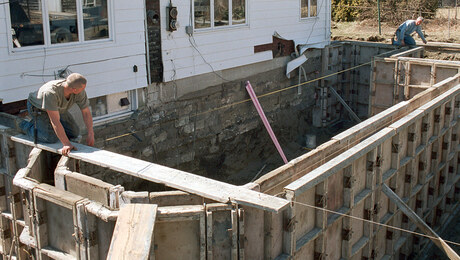
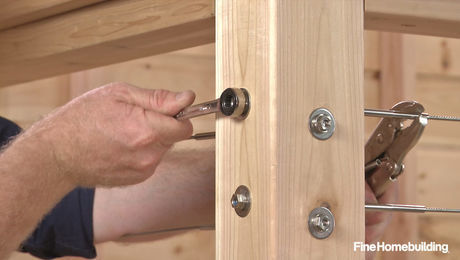


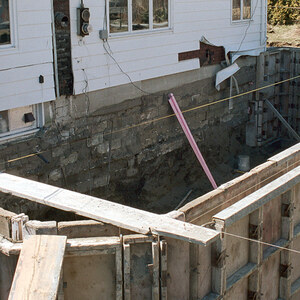
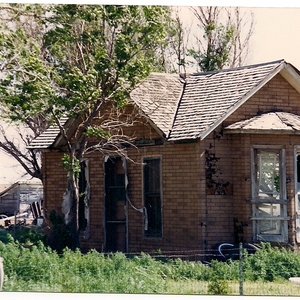






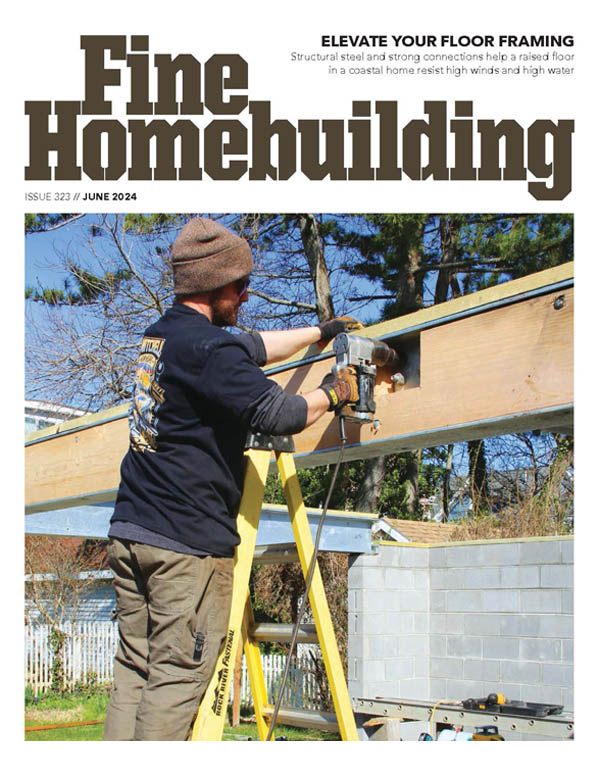

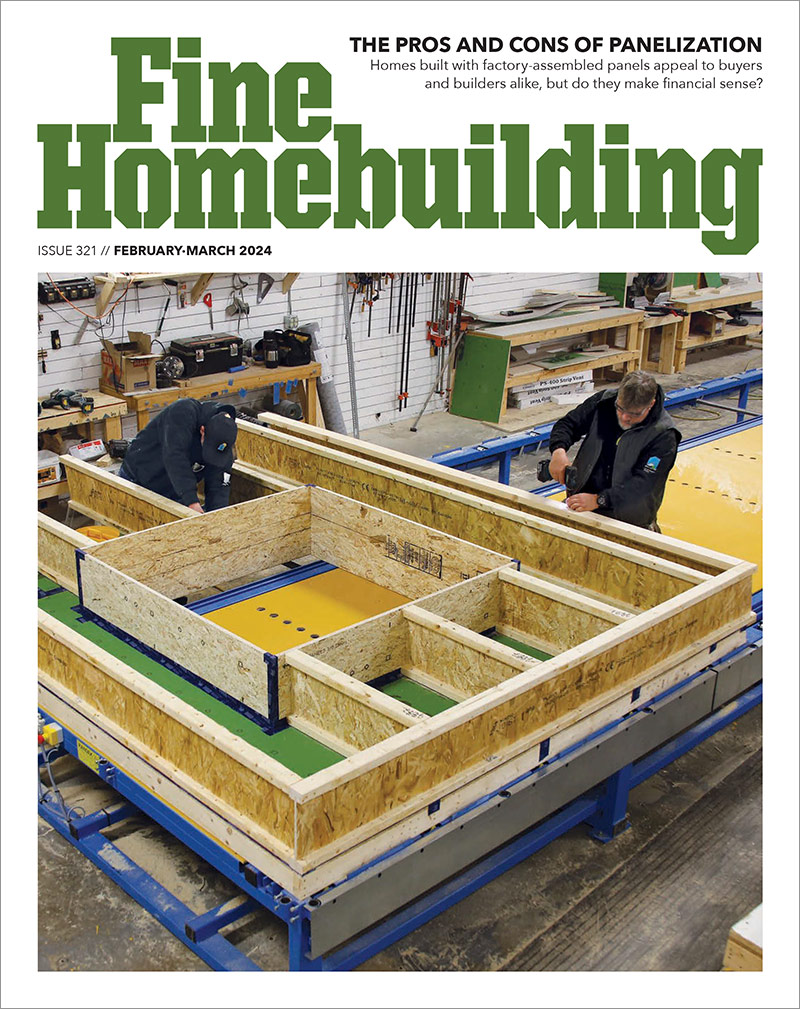

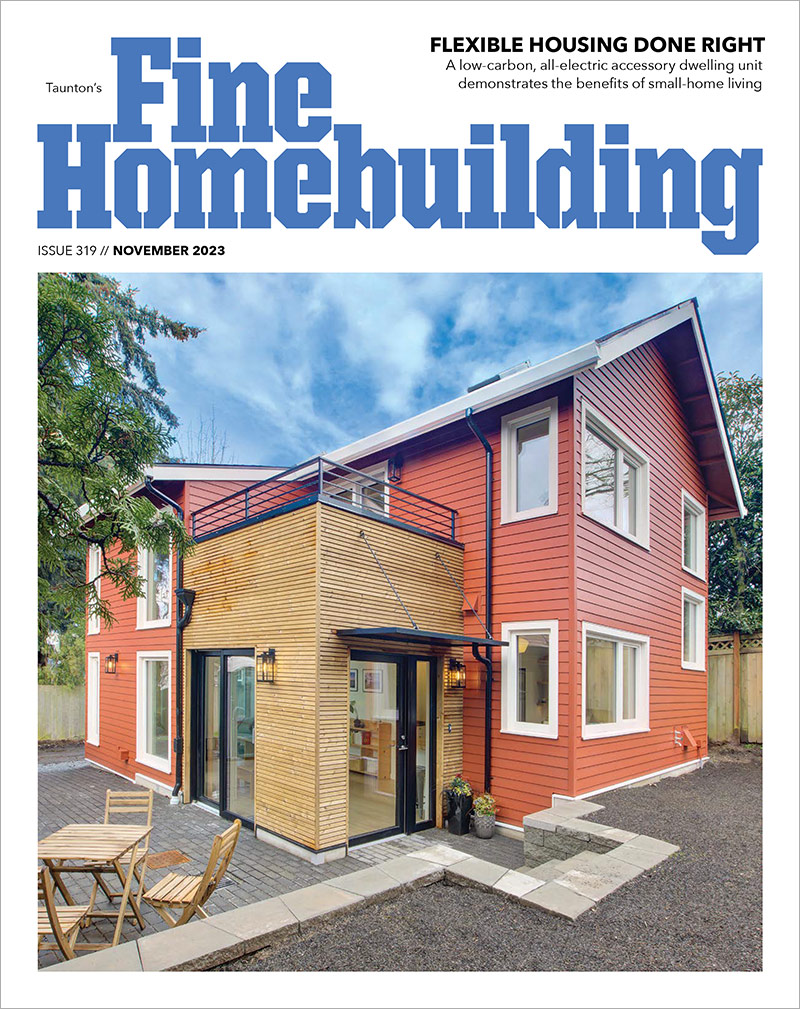

Replies
There's a little more to it.
Things like air infiltration and your locality's winter design temperature; is the unheated basement ceiling insulated? How far below grade is the basement floor? Are the basement walls insulated? Are the ducts that serve the main floor located in the basement ceiling? There are even a few more factors, but they are small compared to these and ones you already mentioned.
Short-cycling of the furnace is a good indicator that the furnace is too big, and HVAC contractors and homeowners alike very often over-size equipment "just to be on the safe side".
As a guess, I think it's quite likely that the heating needs of a 1300 sq. ft. main floor with a heated floor above will very small indeed--maybe as little as 20k BTU's.
An accurate room-by-room load calculation is a must in my view. It will give you not only the block load for the main floor, but will indicate the CFM needs of individual rooms based on their heat loss.
There are various websites that offer programs where you can enter the information and get a fair idea of your heat loss will be. Some of them offer a one-week free use of the program before you have to buy it.
Others on this forum may have specific web addresses, or you can google "heat loss calculations".
Heat Loss
I hope you realize that can be a little intense if you are not familiar with it, I left you a link, but there are ton of them on the net:
http://www.pprbd.org/plancheck/Heat%20Loss%20Table.pdf
Well conductive heat loss is the summation of the U-values times the respective areas. In your case you have a wall area of 1100 sqft having a U-value of roughly 0.077 and windows of 300 sqft w/ a U-value of about 0.33. A bit of heat loss in the floor, but maybe ignore that. Multiply this sum times your delta temperature ... say 70 deg setpoint minus the 0 degrees assumed outside design temp. This will give you the peak BTUH at that temp. Days wich are say 35 deg outside, the heat loss is half. If you wanted you could add the floor loss ... U-value (say 2.5 R-val) x area x (70-50 basement temp).
This is simple CONDUCTION. You also will have e.g. infiltration. Say 0.35 ACH added to the previous loss ... skipping the details of this formula ... for your 1400 sqft and 8 ft ceilings results in a loss of roughly 5,000 btuh.
The previous conduction value is about 12,000 btuh, so the total being about 17,000 btuh +/- ... more likely plus since the R-value of your total wall is not the R-value of the insulation, but somewhat less due to the affects of framing ... but I didn't include the values of gyp board, sheathing, siding, and air films ... so roughly this shouldn't be too far off.
So, at 0 deg, a 17,000 Btuh furnace will run all the time. At 35 deg it will run every 1/2 hour. A 34,000 btuh furnace would run 1/2 hour at 0 deg ... etc.
U-values are the mathematical inverse of R-value.
hvaccalc.com
Above is what I used about 10 years ago. It was cheap but it is for one time use. Based on this I was able to resist the salesman's pitch to replace the existing furnace for the first floor.
DanH,
Calculating based on existing seems like a supreme idea. Where would i find the tables you mentioned?
I suspect you'd have to work backwards with some of the other tables presented here.
First, you'd measure duty cycle for a known set of circumstances -- eg, 25F and 10 mph wind, with inside temp 68. Maybe collect 2-3 different sets of measurements so you could cross-check them.
The duty cycle might be, eg, 4 min on and 20 min off (though you should time total "on" time for an hour or so, vs just one cycle). Four out of 20 works out to 20%. If your heater is running at 100K BTU/hr (you need to find or estimate the output BTU here, if the orafices you have are rated at input BTU) you are using 20K BTU/hr. (I expect there will be all sorts of objections here about approximations -- heater is less efficient for short burn times, etc -- but the other techniques are even more approximate.)
Once you have, say, 20K BTU/hr a 25F & 10 mph, use the tables to build a simple "dummy" house roughly like yours -- eg, stud walls & FG with standard double pane windows -- and calculate the BTU/hr for, say, a 1000 sq ft house at 20 F. Then calculate the BTU/hr for the same house at your worst-case (let's say -10F & 30 mph). If you get, say, 25K & 45K, that says that you should ratio your 20K actual usage factor the same way (ie, 20 times 45, then divided by 25, to get 36K).
You can check your calcs by knowing that, for still air, BTU usage is roughly proportional to temperature differential. Ie, 68 - 25 = 43 degree differential. That would work out to 0.47K BTU per degree. So at -10 you'd have a 78 degree differential so 78 * 0.47K = 36.66K
Like I said, you should run the numbers with 2-3 data sets -- different outside temps & wind conditions -- and pick the larger number. Then add maybe 15-20% to that for a safety margin. (The differences between different data sets will give you a clue as to necessary safety margin.)
The formula
is h=UAdT for transmission heat loss. It is a little more complicate for infiltration/outfiltration losses and preimeter foundation losses.
"h" is the heat loss. "U" is the heat transfer coefficient, which is 1/(the overall composite R-value). For a reasonable rough estimate, you can use the value of the cavity insulation as an overall R-value. The detailed determination of the composite thermal resistence of a structural element is not simple. U for double pane windows is about 0.5, for single pane windows - 1.1 .
"A" is the area in square feet. "dT" is the temperature difference between inside and outside. This can range from 95 degrees in northern midwest to 35 degrees in southern states (for heat loss at night)
Since the space above is heated by a separate system, you can take the roof/ceiling loss as zero.
You add the heat losses of each element (walls, ceilings, floors, windows, doors and preimeter, as applicable) and the heat loss due to estimated leakage. For leakage, h=HUdT, where "HU" is a factor that accounts for the properties of air and converts air changes per hour (ACH) . In a room by room calculation, you would apply this base on number of exposed wall, type of construction, number of windows, etc. For a single family house built in the last few decades, a good estimate is 1/2 to 1ACH, HU = 0.0042 to 0.0083.
Estimating heat loss through a below grade foundation wall can also be very complicated, but can reasonable be estimated by taking the perimeter length, in ft x 3 to determine A. Use 0.5 as U and the same dT as all the others.
You "plug and chug" and add them all up. Simple, right? The "art" of this all comes into play when considering what to with the results, and how much margin is (or isn't) built into the "unknowns" and how does this relate to the selection of equipment and the "what-ifs", etc.
Tim
This is why I get confused with equations that use a letter to signify something-and I do realize that the letters are used in place of the changing numbers you put in their place (depending upon conditions, etc)
"dT" is the temperature difference between inside and outside. This can range from 95 degrees in northern midwest to 35 degrees in southern states (for heat loss at night)
Reading this I'm having to ask how can the difference between in and out range from 95 degrees? Are there words missing in the description of "dT"? Or am I understanding this to mean it's 70 in the house at night and could possible be -25 outside? Why such a vast change between that 95 in Minnesota and 35 in Texas. Is this a worst case v. best case scenario?
or am I so far off base it's laughable.
thanks.
'cause it doesn't get near as cold in Texas. 70 minus 35 deg (winter worst case night time) in Texas gives a dT of 35 Fdeg. Not too many northern locations have a design temp of minus 25 deg to give a design dT of 95, I don't think ... even in Bulwinkle's home town of Frostbite Falls, MN. I may be wrong, although I haven't looked up the design winter temp of places in MT, ND, and MN.
Well ... looked up some sites in my ASHRAE Fundamentals. I do see a bunch in these states that go as low as -20 degF. I spotted one that was like -22. Saw a bunch in the -10+ range. The -25 would be an extreme, I think for the lower 48 states. Lots of locations in Texas w/ the design temp of 25-35 degF.
Here in tropical southern MN I'd figure a 100F deltaT -- 70 above to 30 below. We've certainly seen 30 below here on a number of occasions -- gets that cold for a few nights running about every 5 years.
What temp it CAN get to is much different than the official design temp, though ... but you knew that, I think. I knew of a place w/ a design temp of -4 I think and yet we might see -10 on occasion. Official design temp is that where only a small percent of the time it will be below (or above for cooling) that temp.
My design temp is the temp that won't make things frosty with the spousal unit.
I think I understand.
Having had to wait for a tee time outside Austin because of frost, I suppose that best case is way down at the tip of Texas..
Sorry if my explanation was
not clear, but Clewless answered well. dT is the difference in the inside air temperature and the outside air temperature at design conditions for the location. Those conditions vary from place to place, sometimes, extremely so.
The American Society of Heating, Refrigeration and Air Conditioning Engineering (ASHRAE) has compliled historical weather data for all major metropolitan areas in the US and most around the world. For heating, they list design conditions in two "forms" a 99% value, meaning the outdoor temperarature which, 99% of the time, is the lowest you weill ever see. They also have a 99.6% number.
For Madison, WI, the 99.6% number is -10.3 (degrees F). So the dT for that lcation, using that number and designing for indoor temperature of 70, is 80.3. For San Antonio, TX the 99.6% number is 27.6 making the "dT" 43.3 degF. MInneapolis has a design 99.6% temperature of -14.6 F.
So, then is the other 0.4% important? That just about a day and a half. Could you live with your house being a little colder than 70 (or whatever conditions the design is based) for two days? Most could. Besides, you run the loads and you "know" how much fudge is in the numbers, how much conservatism is built in and how closely the output capacity of the heater/boiler/funace matches the load. For heating, you would usually select the smallest size unit that at least meets the load. Having a little extra capacity for heat is not bad. Extreme oversizing is wastefule and causes premature equipment failure due to short cycling and in some cases excessive condensation of flue products.
Wouldn't that only tell you how long it takes to satisfy the t'stat?
Also, you'd need to know the actual BTU output of the furnace, which may be far different than its rated output, and it seems you'd need to know the air temps at the beginning and end of the cycle.
This is a new one on me, but I'd like to know more about it.
If you measure the duty cycle over a period of time (several cycles) you essentially determine how much oversized the heater is for those conditions. (Eg, if the unit's only firing 20% of the time it's 5 times oversized for those conditions.) You measure at a given thermstat setpoint (starting with the house up to temp), and presume that that temp doesn't change much over several cycles of the heater.
True, you need to know the BTU output of the furnace, but one presumes that info is available (or at least was, at one time) or it would have been impossible to size the furnace in the first place. In any event, for the OP's situation, where he's picking a nozzle for an existing furnace, one would presume that all the nozzles would be sized the same way, so any imprecision in the sizing of one nozzle would "go the same way" for the others, and it would come out in the wash.
Test Results - Please comment
Today seemed like a good day to monitor operation. I began fairly early in the morning when it was fairly cold (30 degrees). I set the 2nd floor thermostat to 71 degrees and the 1st floor to 70 degrees. I let both run at those temps for about 1/2 hour before conducting the test. In each case, i let it run 8 on/off cycles and monitored the time it ran and the time it was off. I thought I'd post the results in case anyone is interested and I'm eager for comments or observations that shoot holes in my theory.
If I've got this right, if the design is to achieve 70 degrees inside when it's 0 degrees outside, at 30 degrees outside, the furnace should run 57% of the time.
During the first hour the furnace ran pretty consistently 6 minutes on/8 minutes off or 42% of the time.
For the second test, two variables changed - I raised the second floor temperature to 2 degrees above the first floor set point to ensure that the first floor system wasn't trying to "help" heat the second floor. Also, during the second test, the outside temperature outdoors rose to 32 degrees. Again, using simple math, at 32 degrees outside and 70 inside, the furnace should run 54% of the time. This time it ran 5 minutes on/9 minutes off or 36% of the time
I'm sure this relationship isn't linear, but based on my findings, it looks like my oil burner is maybe 15-18% oversized if it were charged with keeping the inside at 70 degrees. Does this sound right?
OK, you have a delta-T of about 40F (70 - 30) and the furnace is running 42% of the time.
To figure the % with a delta-T of 70F (70 - 0) you'd (using the simplistic formula) solve:
42/40 = X/70 --> X = 70 x (42/40)
I get 73.5% at 0F, meaning the unit is about a third larger than it needs to be.
Or, if you work backwards, figuring 100% at 0F:
X/40 = 100/70 --> X = 40 * (100/70)
That would yield 57.1% run time at 30F. (And to check yourself, 42/57 = 73.6%.)
Of course, this technique doesn't account for wind (that the worst-case calcs need to consider), nor does it account for heat losses into the ground (which will not increase as rapidly as temperature drops). So a certain (ahem) "windage" is needed in both directions. This is where the charts might help, if you hold them up to the light the right way.
I think the net of this is that you could maybe, as you say, cut the burner heat 15% or so. Much more than that starts to eat into your margin of error.
Looks like Dan has part of the math right. But 73% is only about 25+% oversized, not one third, I think. Regardless your or his thinking/math is the right concept and not particularly surprising. You calc your load at design conditions. Then you go to pick your unit off the shelf .... hmmm nothing available that just fits your design load ... so you typically choose the next larger available sized furnace ... which can often be 5-25% larger. I worked with an energy code that limited oversizing to 25% if I recall right ... just to eliminate arbitrary oversizing ... and the inefficiency that goes with it.
The vast majority of heating hours is like at 40-60% of design load, so proper sizing is important.
Whatever your conditions, you are not particularly grossly oversized IMO. 50-100% oversized would be way oversized. Can you adjust it? Maybe if you so feel compelled to do so. Nothing you said/did is particularly alarming or unusual.
Turning up the upstairs setpoint may not yeild the results you think unless you maintain that for a while. Even wood construction may take a while to stabilize (i.e. have the wood/mass stabilize in temperature).
Thanks, Dan. I love it when things can be solved with math. Today was a good day for another test. Temp was 25 and the wind was howling. The burner ran 7 minutes on and 7 minutes off. Nice round numbers to work with. Thanks again; I really appreciate the insight.